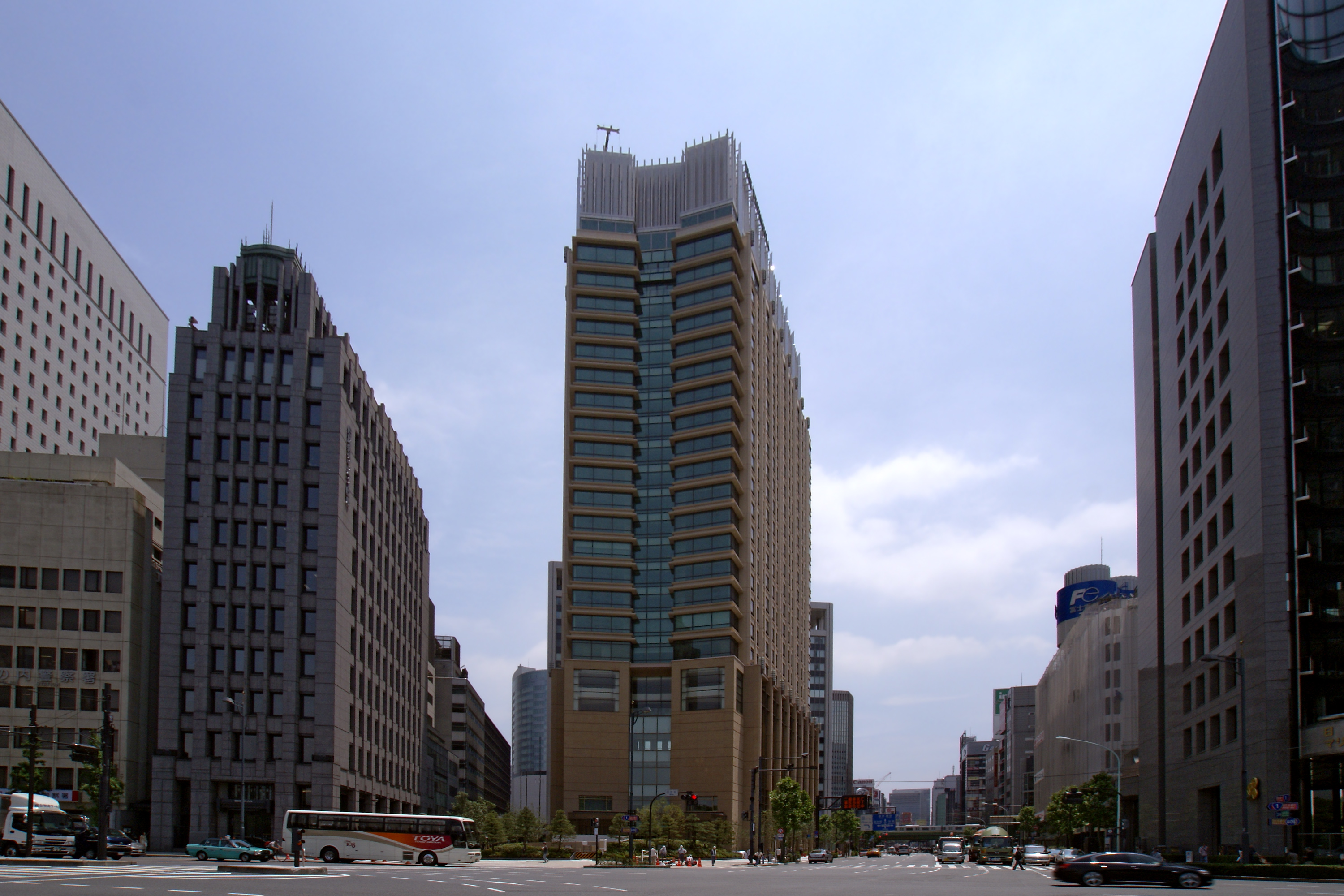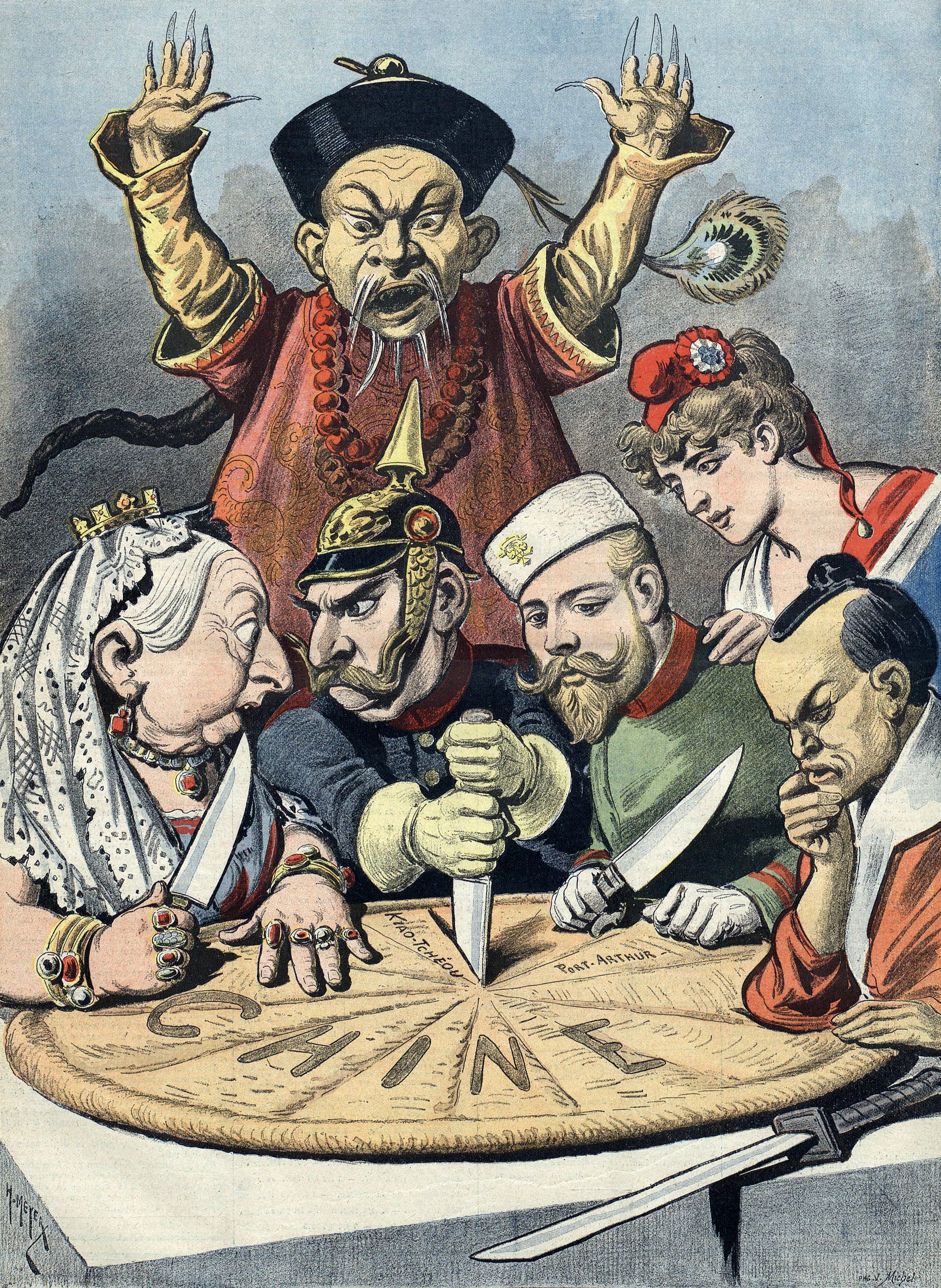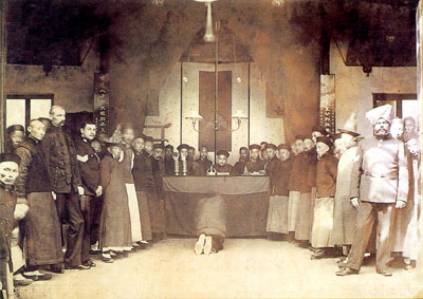|
Rokumeikan
The was a large two-story building in Tokyo, completed in 1883, which became a controversial symbol of Westernisation in the Meiji period. Commissioned for the housing of foreign guests by the Foreign Minister Inoue Kaoru, it was designed by British architect Josiah Conder, a prominent Western adviser working in Japan. Although the ''Rokumeikans heyday was brief, it became famous for its parties and balls, which introduced many high-ranking Japanese to Western manners for the first time, and it is still a fixture in the cultural memory of Japan. It was, however, largely used for the accommodation of guests of the government, and for meetings between Japanese who had already lived abroad. Its reputation as a center of dissipation is largely exaggerated. History Background The site of the Rokumeikan was in Hibiya, near the Imperial Palace on land which had formerly been used as an arsenal for the Satsuma domain. After the Meiji restoration, in 1872 the land became the headquarte ... [...More Info...] [...Related Items...] OR: [Wikipedia] [Google] [Baidu] |
Rokumeikan 1399
The was a large two-story building in Tokyo, completed in 1883, which became a controversial symbol of Westernisation in the Meiji period. Commissioned for the housing of foreign guests by the Foreign Minister of Japan, Foreign Minister Inoue Kaoru, it was designed by British architect Josiah Conder (architect), Josiah Conder, a prominent o-yatoi gaikokujin, Western adviser working in Japan. Although the ''Rokumeikans heyday was brief, it became famous for its parties and balls, which introduced many high-ranking Japanese to Western manners for the first time, and it is still a fixture in the cultural memory of Japan. It was, however, largely used for the accommodation of guests of the government, and for meetings between Japanese who had already lived abroad. Its reputation as a center of dissipation is largely exaggerated. History Background The site of the Rokumeikan was in Hibiya, near the Kokyo, Imperial Palace on land which had formerly been used as an arsenal for the Satsu ... [...More Info...] [...Related Items...] OR: [Wikipedia] [Google] [Baidu] |
Josiah Conder (architect)
Josiah Conder (28 September 1852 – 21 June 1920) was a British architect who was hired by the Meiji Japanese government as a professor of architecture for the Imperial College of Engineering and became architect of Japan's Public Works. He started his own practice after 1888. Conder designed numerous public buildings in Tokyo, including the ''Rokumeikan'', which became a controversial symbol of Westernisation in the Meiji period. He educated young Japanese architects, notably Tatsuno Kingo and Katayama Tōkuma, earning him the nickname "father of Japanese modern architecture." Early career Conder was born in Brixton, Surrey, London, to Josiah Conder, a banker, and his wife, Elizabeth (Willsher). Conder was educated at Bedford Modern School, and then became an architect pupil with Thomas Roger Smith. He later studied architecture at the South Kensington School of Art and the University of London. His grandfather, Josiah Conder (1789-1855) was a well known religious books ... [...More Info...] [...Related Items...] OR: [Wikipedia] [Google] [Baidu] |
Meiji Period
The is an era of Japanese history that extended from October 23, 1868 to July 30, 1912. The Meiji era was the first half of the Empire of Japan, when the Japanese people moved from being an isolated feudal society at risk of colonization by Western powers to the new paradigm of a modern, industrialized nation state and emergent great power, influenced by Western scientific, technological, philosophical, political, legal, and aesthetic ideas. As a result of such wholesale adoption of radically different ideas, the changes to Japan were profound, and affected its social structure, internal politics, economy, military, and foreign relations. The period corresponded to the reign of Emperor Meiji. It was preceded by the Keiō era and was succeeded by the Taishō era, upon the accession of Emperor Taishō. The rapid modernization during the Meiji era was not without its opponents, as the rapid changes to society caused many disaffected traditionalists from the former samurai ... [...More Info...] [...Related Items...] OR: [Wikipedia] [Google] [Baidu] |
Kazoku
The was the hereditary peerage of the Empire of Japan, which existed between 1869 and 1947. They succeeded the feudal lords () and court nobles (), but were abolished with the 1947 constitution. Kazoku ( 華族) should not be confused with ''"kazoku ( 家族)"'', which is pronounced the same in Japanese, but with a different character reading that means "immediate family" (as in the film ''Kazoku'' above). Origins Following the Meiji Restoration of 1868, the ancient court nobility of Kyoto, the , regained some of its lost status. Several members of the , such as Iwakura Tomomi and Nakayama Tadayasu, played a crucial role in the overthrow of the Tokugawa shogunate, and the early Meiji government nominated to head all seven of the newly established administrative departments. The Meiji oligarchs, as part of their Westernizing reforms, merged the with the former into an expanded aristocratic class on 25 July 1869, to recognize that the and former were a social class d ... [...More Info...] [...Related Items...] OR: [Wikipedia] [Google] [Baidu] |
Inoue Kaoru
Marquess Inoue Kaoru (井上 馨, January 16, 1836 – September 1, 1915) was a Japanese politician and a prominent member of the Meiji oligarchy during the Meiji period of the Empire of Japan. As one of the senior statesmen (''Genrō'') in Japan during that period, he had a tremendous influence on the selection of the nation's leaders and formation of its policies. Early years Born Yakichi (勇吉) to a lower-ranked ''samurai'' family in Yuda, Chōshū domain (present day Yamaguchi, Yamaguchi Prefecture), Inoue attended the ''Meirinkan'' domain school with his brother Ikutarō (幾太郎). He was a close boyhood friend of Itō Hirobumi who later became Japan's first prime minister, and he played an active part in the ''sonnō jōi'' movement. In 1858, he studied ''rangaku'', artillery and swordsmanship in Edo. In the Bakumatsu period, Inoue emerged as a leader of the anti-foreigner movement in his native Chōshū. Desiring to rid Japan of foreigners, he and Takasugi Shinsa ... [...More Info...] [...Related Items...] OR: [Wikipedia] [Google] [Baidu] |
Hibiya
is a colloquial name for a neighborhood of Chiyoda Ward in Tokyo. The area along Hibiya Street ( National Route 1) from Yūrakuchō to Uchisaiwaichō is generally considered Hibiya district. Administratively, it is part of the Yūrakuchō district. There is no actual administrative district in Chiyoda called "Hibiya" but the name is used in some local place names such as Hibiya Park and Hibiya Station (administratively in Yūrakuchō). Hibiya was part of the old Kōjimachi ward in Tokyo City, before it was transformed into a metropolis. Etymology The outskirts of this district are reclaimed from the ocean, and the "hibi" of Hibiya is derived from the facility for the laver of nori made of bamboo, whose name is also "hibi". This effectively makes the word an ateji, kanji characters used to phonetically represent native Japanese words. History In the era of Tokugawa shogunate, the Tokugawa bakufu worked out of Edo castle and the area surrounding Edo castle was developed a ... [...More Info...] [...Related Items...] OR: [Wikipedia] [Google] [Baidu] |
Chikamatsu Kiken Buto No Ryakuke
was a Japanese dramatist of jōruri, the form of puppet theater that later came to be known as bunraku, and the live-actor drama, kabuki. The ''Encyclopædia Britannica'' has written that he is "widely regarded as the greatest Japanese dramatist". His most famous plays deal with double-suicides of honor bound lovers. Of his puppet plays, around 70 are ''jidaimono'' (時代物) (historical romances) and 24 are ''sewamono'' (世話物) (domestic tragedies). The domestic plays are today considered the core of his artistic achievement, particularly works such as ''The Courier for Hell'' (1711) and ''The Love Suicides at Amijima'' (1721). His histories are viewed less positively, though ''The Battles of Coxinga'' (1715) remains praised. Biography Chikamatsu was born Sugimori Nobumori. to a samurai family. There is disagreement about his birthplace. The most popular theory. suggests he was born in Echizen Province, but there are other plausible locations, including Hagi, Nagato Provi ... [...More Info...] [...Related Items...] OR: [Wikipedia] [Google] [Baidu] |
Gaimusho
The is an executive department of the Government of Japan, and is responsible for the country's foreign policy and international relations. The ministry was established by the second term of the third article of the National Government Organization Act, and the Ministry of Foreign Affairs Establishment Act. According to the law, the mission of the ministry is "to aim at improvement of the profits of Japan and Japanese nationals, while contributing to maintenance of peaceful and safe international society, and, through an active and eager measure, both to implement good international environment and to keep and develop harmonic foreign relationships". Policy formulation Under the 1947 constitution, the cabinet exercises primary responsibility for the conduct of foreign affairs, subject to the overall supervision of the National Diet. The Prime Minister is required to make periodic reports on foreign relations to the Diet, whose upper and lower houses each have a foreign af ... [...More Info...] [...Related Items...] OR: [Wikipedia] [Google] [Baidu] |
Unequal Treaties
Unequal treaty is the name given by the Chinese to a series of treaties signed during the 19th and early 20th centuries, between China (mostly referring to the Qing dynasty) and various Western powers (specifically the British Empire, France, the German Empire, the United States, and the Russian Empire), and the Empire of Japan. The agreements, often reached after a military defeat or a threat of military invasion, contained one-sided terms, requiring China to cede land, pay reparations, open treaty ports, give up tariff autonomy, legalise opium import, and grant extraterritorial privileges to foreign citizens. With the rise of Chinese nationalism and anti-imperialism in the 1920s, both the Kuomintang and the Chinese Communist Party used the concept to characterize the Chinese experience of losing sovereignty between roughly 1840 to 1950. The term "unequal treaty" became associated with the concept of China's "century of humiliation", especially the Concessions in China, concessio ... [...More Info...] [...Related Items...] OR: [Wikipedia] [Google] [Baidu] |
Extraterritoriality
In international law, extraterritoriality is the state of being exempted from the jurisdiction of local law, usually as the result of diplomatic negotiations. Historically, this primarily applied to individuals, as jurisdiction was usually claimed on peoples rather than on lands. Extraterritoriality can also be partly applied to physical places, such as the immunity granted to diplomatic missions, military bases of foreign countries, or offices of the United Nations. The three most common cases recognized today internationally relate to the persons and belongings of foreign heads of state and government, the persons and belongings of ambassadors and other diplomats, and ships in international waters. Forms In the past, pre-modern states generally claimed sovereignty over persons, creating something known as personal jurisdiction. As people move between borders, this led, in the framework of a territorial jurisdiction, to certain persons being under the laws of countries in w ... [...More Info...] [...Related Items...] OR: [Wikipedia] [Google] [Baidu] |
:Category:Japanese Words And Phrases
{{Commons Words and phrases by language Words Words A word is a basic element of language that carries an objective or practical meaning, can be used on its own, and is uninterruptible. Despite the fact that language speakers often have an intuitive grasp of what a word is, there is no consen ... Words ... [...More Info...] [...Related Items...] OR: [Wikipedia] [Google] [Baidu] |
French Language
French ( or ) is a Romance language of the Indo-European family. It descended from the Vulgar Latin of the Roman Empire, as did all Romance languages. French evolved from Gallo-Romance, the Latin spoken in Gaul, and more specifically in Northern Gaul. Its closest relatives are the other langues d'oïl—languages historically spoken in northern France and in southern Belgium, which French ( Francien) largely supplanted. French was also influenced by native Celtic languages of Northern Roman Gaul like Gallia Belgica and by the ( Germanic) Frankish language of the post-Roman Frankish invaders. Today, owing to France's past overseas expansion, there are numerous French-based creole languages, most notably Haitian Creole. A French-speaking person or nation may be referred to as Francophone in both English and French. French is an official language in 29 countries across multiple continents, most of which are members of the ''Organisation internationale de la Francophonie'' ... [...More Info...] [...Related Items...] OR: [Wikipedia] [Google] [Baidu] |







